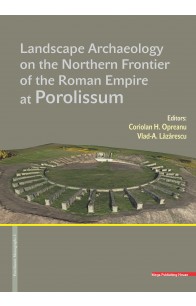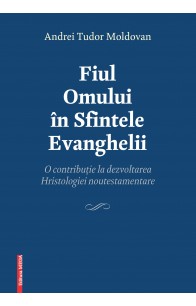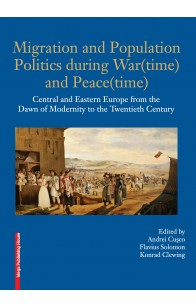Rezultate căutare pentru 'Andrei Tudor Moldovan'
„The frontiers of the Roman Empire, over 5000 km long, stretch from the Atlantic coast of Scotland, along the Rhine and the Danube, also enclose the Banat region and Transylvania, then going down along the Oriental Carpathians to the Black Sea; from the southern coast of the Black Sea they continue towards the Near East until the Red Sea; then, in North Africa, they line the edge of the Sahara desert until the Atlantic coast of Morocco. Over this entire area, visible traces of fortifications, roads and settlements are still preserved, but numerous monuments still lay hidden underneath the earth. Despite the fact that the Roman frontiers crossed regions with different relief and climate, they constitute a whole in that they were designed to protect Roman territories. The research of these monuments and the preservation policy regarding them was and is unequal in the various presentday states on whose territory traces of the Roman frontier are to be found. Consequently, in the ‘80s of the 20th century, the idea of globally protecting the Roman frontiers, viewed as a unitary monument, was met. In 1987, Hadrian’s Wall in United Kingdom was declared a UNESCO monument. It was followed in 2005 by the German-Raetian sector, on which occasion the UNESCO committee decided to set up the ‘Frontiers of the Roman Empire’ site. (...)
This project through its complexity generated an interdisciplinary approach of the proposed subject stimulating such future attempts in the archaeological research field. By using the latest technical methods of non-destructive investigation the project did not damage the stratigraphy of the archaeological site obtaining instead a high amount of data otherwise time consuming judging from the archaeological excavations perspective contributing also to the preservation of the cultural heritage.” - Introduction
„Lucrarea Fiul Omului în Sfintele Evanghelii. O contribuţie la dezvoltarea hristologiei noutestamentare a constituit, iniţial, proiectul tezei de doctorat a Părintelui Moldovan Andrei Tudor (Ierom. Iosif), susţinută în anul 2016, la Facultatea de Teologie Ortodoxă a Universităţii Babeş-Bolyai, sub îndrumarea Pr. Prof. Univ. Dr. Stelian Tofană, titularul Catedrei de studiul Noului Testament a facultăţii mai sus amintită.
Analizând lucrarea de faţă, fac câteva remarci cu privire la semnificaţia şi importanţa subiectului cărţii, care, cu siguranţă, îl va ajuta pe cititorul „neteolog” să descifreze mai bine meandrele abordării respectivei teme. În ultimul timp, în literatura de specialitate, titlul „Fiului Omului”, singurul pe care Iisus şi L-a împropriat, a căpătat diferite interpretări, mai mult sau mai puţin apropiate de semnificaţia sa originală.” (din „Prefaţă”)
"This volume with the somewhat ambitious title Migration and Population Politics during War(time) and Peace(time): Central and Eastern Europe from the Dawn of Modernity to the Twentieth Century reflects and builds upon the current debates in the thriving field of migration studies and migration history. It aims to provide an innovative perspective on the regional East European dimension of this phenomenon by discussing the specific migration processes in the area from early modern times to the present."(Excerpt from "Introduction")
În perioada 1965–1989 s-au produs în România circa 550 de filme, dintre care ceva mai mult de jumătate sunt cunoscute drept „filme de actualitate”. Potrivit definiţiei oficiale, redactată în 1968 în urma şedinţei Comisiei Ideologice din 23 mai, unde Nicolae Ceauşescu şi Paul Niculescu‑Mizil s-au întâlnit cu cineaştii, acest tip de film este „inspirat din diferite zone şi aspecte ale realităţii”. În ciuda caracterului vag, descrierea stabileşte o relaţie directă între realitatea cotidiană comunistă şi poveştile pe care filmele de actualitate se presupune că trebuie să le prezinte. O intervenţie oficială din 1976, prezentă într‑un program de măsuri privind aplicarea hotărârilor privind munca ideologică stabilită în cadrul Congresului al XI‑lea al Partidului şi de Congresul educaţiei politice şi al culturii socialiste, aduce clarificări suplimentare prin conturarea ideii că filmul de actualitate trebuie să evidenţieze „rolul conducător al partidului în construirea socialismului, figura omului nou, a comunismului, participarea maselor la elaborarea şi înfăptuirea politicii partidului, la conducerea societăţii, procesul de educare a oamenilor muncii în spiritul normelor eticii echităţii socialiste”. Acest gen cinematografic are obligativitatea de a atrage cât mai mulţi spectatori la nivel autohton şi trebuie să pătrundă pe plan mondial, pentru a promova nivelul socioeconomic al României. Cristian Tudor Popescu remarcă faptul că filmul de actualitate are sarcina de a propaga ideologia naţional-comunistă românească şi, prin urmare, trebuie să rămână subordonat scopului propagandistic. Ideea că filmul de actualitate nu are altă calitate decât aceea de a deservi scopuri ideologice este împărtăşită de majoritatea cercetătorilor care au inclus în lucrările lor şi o discuţie despre această linie tematică; printre ei se numără: antenumitul C.T. Popescu, Călin Căliman şi alţii despre care vom discuta mai în detaliu, pe parcurs. (din „Introducere”)







